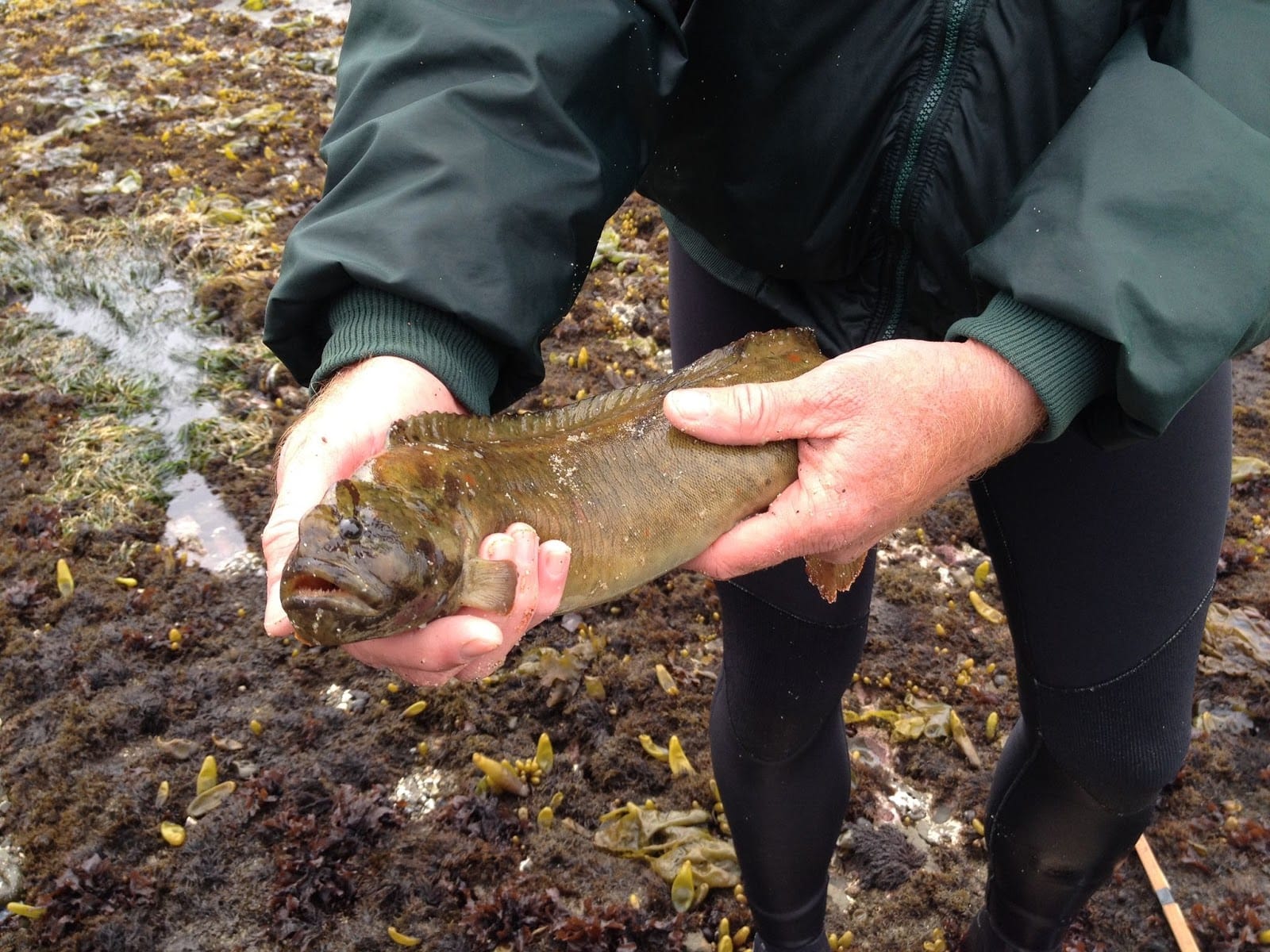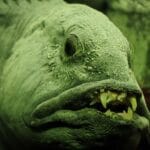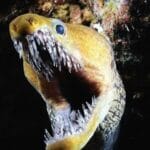Meet the monkeyface prickleback (*Cebidichthys violaceus*), a fish that defies expectations! Resembling an eel, this remarkable creature belongs to the Perciformes order, showcasing a unique evolutionary journey. Inhabiting the Pacific tide pools from southern Oregon to northern Baja California, the monkeyface prickleback boasts a surprising life history, dietary adaptations, and even untapped potential for sustainable aquaculture. Join us as we explore the fascinating world of this “monkey-faced” marvel.
A Fish of Two Diets: From Carnivore to Herbivore
The monkeyface prickleback’s dietary habits are a testament to its adaptability. As juveniles, these fish are voracious carnivores, consuming zooplankton and small crustaceans like copepods, amphipods, and mysids. However, a dramatic transformation occurs as they mature. Adult monkeyface pricklebacks transition to a primarily herbivorous diet, grazing on red and green algae, much like underwater cows munching on seaweed and algae in their rocky pastures. This ontogenetic dietary shift, probably driven by competition avoidance, is a key aspect of their life history and ecological role. It also offers potential benefits for aquaculture, as we’ll explore later.
Life in the Intertidal Zone: A Balancing Act
The rocky intertidal zone, the dynamic meeting point of land and sea, is the monkeyface prickleback’s chosen home. This challenging environment, with its crashing waves, fluctuating tides, and varying temperatures, demands resilience. The monkeyface prickleback rises to the occasion, exhibiting remarkable adaptations, including the ability to breathe air for short periods when exposed during low tide. These resourceful fish seek refuge in crevices and kelp forests, using these nooks and crannies as both protection from predators and strategic vantage points for ambushing prey. While the specifics of their diet are still under investigation by researchers, they likely consume small invertebrates and possibly algae. Check out these remarkable tide pool plants: mimulus monkey flower and ligustrum waxleaf.
Unraveling the Mysteries of Reproduction
Despite our growing knowledge, the reproductive behavior of the monkeyface prickleback remains shrouded in mystery. We know they lay eggs on subtidal rocky surfaces, and that fertilization is internal. However, crucial details, such as parental care and mating rituals, are still being investigated. Do they guard their eggs? What triggers their reproductive cycle? These are just some of the questions scientists are working to answer.
Conservation Concerns: Protecting a Unique Species
While the official conservation status requires further assessment, the monkeyface prickleback may be vulnerable to habitat destruction, pollution, and competition with invasive species. Understanding the full extent of these threats is crucial for implementing effective conservation strategies. Ongoing research aims to shed light on the specific challenges this species faces and how best to protect it within the complex intertidal ecosystem.
Aquaculture Potential: A Sustainable Food Source?
The monkeyface prickleback presents intriguing possibilities for sustainable aquaculture. Its primarily herbivorous diet reduces the need for fishmeal-based feeds, a major environmental concern in conventional aquaculture. This “new white meat”, with its mild flavor comparable to cod or flounder, offers a potential alternative seafood source. However, more research is needed to assess the long-term feasibility and environmental impacts of monkeyface prickleback aquaculture.
Unanswered Questions and Future Research
Much remains to be discovered about this intriguing fish. Key areas of ongoing research include:
- Ecosystem Dynamics: What is the precise ecological role of the monkeyface prickleback in the intertidal community? How does it interact with other species? What is its impact on algae populations?
- Adaptation and Evolution: What specific adaptations enable it to thrive in the harsh intertidal environment? How did its unique morphology evolve?
- Reproductive Secrets: Unraveling the details of their mating behaviors, parental care, and reproductive success is crucial for understanding their life cycle.
- Conservation Status: A thorough assessment of its vulnerability to environmental threats is needed to guide conservation efforts.
- Aquaculture Sustainability: Can monkeyface prickleback aquaculture be truly sustainable? What are the potential benefits and challenges?
The monkeyface prickleback is a testament to the wonders of biodiversity and the importance of scientific inquiry. As we delve deeper into its world, we gain valuable insights into the delicate balance of the intertidal zone and the potential for sustainable solutions to meet our growing needs.
A Culinary Curiosity: Can You Eat Monkeyface Prickleback?
Yes, you can eat monkeyface prickleback! Historically, Native American tribes along the Pacific coast considered it a valuable food source. Its mild, white flesh, often compared to cod or flounder, lends itself to various cooking methods, from frying and baking to grilling, steaming, and even ceviche or fish tacos. Nutritionally, it’s a good source of protein, omega-3 fatty acids, and Vitamins B12 and D. While not a common sight in supermarkets, you might find it at specialty seafood markets or online. Currently, it’s considered a sustainable seafood choice, but ongoing research into responsible fishing practices is essential.
A Pacific Coast Resident: Where Does it Live?
The monkeyface prickleback (Cebidichthys violaceus) calls the rocky intertidal zone of the Pacific coast home, from southern Oregon to northern Baja California. This dynamic environment, with its fluctuating tides and temperatures, has shaped its remarkable adaptations. These fish seek shelter in crevices, kelp forests, and tidepools, which provide protection from predators and harsh conditions. They are equipped to withstand brief periods out of water, thanks to their air-breathing capabilities.
Predators and Survival: Navigating the Tide Pool Dangers
Life in the tide pool is fraught with peril, especially for juvenile monkeyface pricklebacks. Birds like egrets and mergansers, along with fish like cabezon and grass rockfish, pose significant threats. As they mature and transition to a herbivorous diet, they become less appealing to some fish predators. However, larger marine mammals like seals and sea lions, along with human fishing activities (bycatch), still present dangers. Ongoing research investigates the complex interplay of factors influencing their survival, including environmental changes and potential disease vulnerability.
- Senior at What Age: Benefits & Eligibility Guide - March 29, 2025
- Unlocking Senior Benefits: How Old is a Senior? Your Complete Guide - March 29, 2025
- Master Russian Politeness:A Guide to Saying Please - March 29, 2025
















